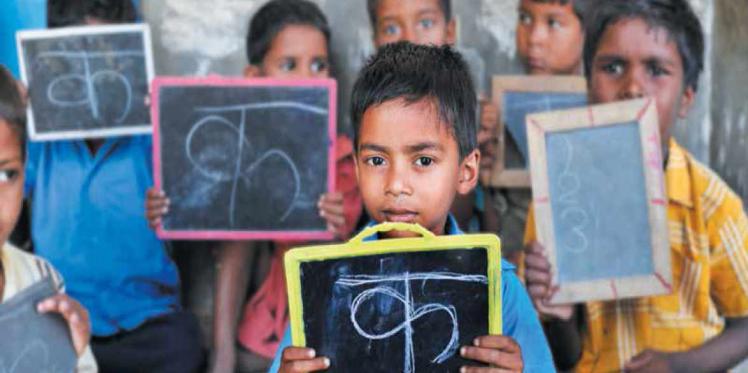The education systems of India and the United States are very different in terms of how they work, how they are organized, and what they produce. Although both countries place high importance on education, there are significant disparities in the ways in which education is provided and assessed in each country.

Education in India places a significant amount of emphasis on learning by rote and memory, along with a significant concentration on being proficient in theoretical concepts. The coursework is standardized, and students are expected to adhere to a comprehensive list of rules and regulations. The system is extremely competitive and evaluates candidates mostly based on their academic performance. Exams taken to get admission are a significant factor in establishing a student’s academic and career trajectory.
The education system in the United States, on the other hand, is more flexible and focuses on creative problem-solving, critical thinking, and critical analysis. Students have more freedom to choose what they want to study, so they can make their education fit their own interests and goals for their future careers. Students in the American school system have a significant opportunity to enhance their leadership and teamwork abilities through participation in extracurricular activities, which play a significant role in the system.
Using different kinds of technology in the education system is another big change. While the educational system in the United States has fully accepted technological advancements and makes great use of them in the classroom, the educational system in India is still in the process of incorporating technological advancements.
Even with these differences, both ways of teaching have things that work well and things that don’t. The education system in India is sometimes criticized for not placing enough emphasis on the development of student’s practical skills and creative potential, despite the fact that it produces students who excel in academic fields such as mathematics and physics. On the other side, the education system in the United States encourages inventiveness and originality, although it has been criticized for its excessively high expenses and unequal access to education.
In summary, the educational systems of India and the United States are very different from one another in terms of their methods, organizational structures, and end results. Although both systems have their own advantages and disadvantages, there are numerous things that can be gained by comparing and contrasting the positive aspects of each. We have the ability to establish an educational system that is on par with the best in the world if we take a more well-rounded approach that draws upon the strengths of both of these models.
Here are some other considerations to take into account while talking about educational systems:
Funding: Most of the money for the Indian education system comes from the central government. On the other hand, the US education system gets money from both public and private institutions. This has an effect not only on the standard of education that is offered in each nation but also on the cost of receiving an education for students.
Curriculum: The curriculum in the Indian education system is more structured and based on traditional subjects like science, mathematics, and language. In contrast, the education system in the United States offers a more diverse range of subjects, including social sciences, humanities, and the arts. The Indian education system is more focused on traditional subjects. This makes it possible to take a more holistic approach to education, one that considers the wants and passions of students as well as their academic requirements.
Assessment: In India, the education system is based a lot on tests and grades, but in the U.S., students are evaluated in a variety of ways, such as through written assignments, oral presentations, and group projects. This makes it possible to conduct an evaluation of student learning that is more complete and provides a better knowledge of the student’s strengths and limitations.
Teaching styles: Both the United States and India use distinct methods of instructing their students. In India, teachers are frequently viewed as figures of authority who are responsible for passing on information to their students. On the other hand, in the United States, teachers are more likely to adopt the role of a coach, encouraging students to think critically and come up with their own original ideas.
Access to education: Access to education is still a big problem in India, particularly in rural areas where infrastructure and resources are lacking. This is especially true for younger generations. There are still problems in the United States with the affordability of education and access to education of high quality for communities that are excluded, despite the fact that access to education is generally more broadly available.
While comparing the educational systems of India and the United States, these are only a few more elements that should be taken into consideration. In the end, both systems have their own advantages and disadvantages, and there are many things that can be learned from one another in order to develop an education system that is more efficient and fair to all students.